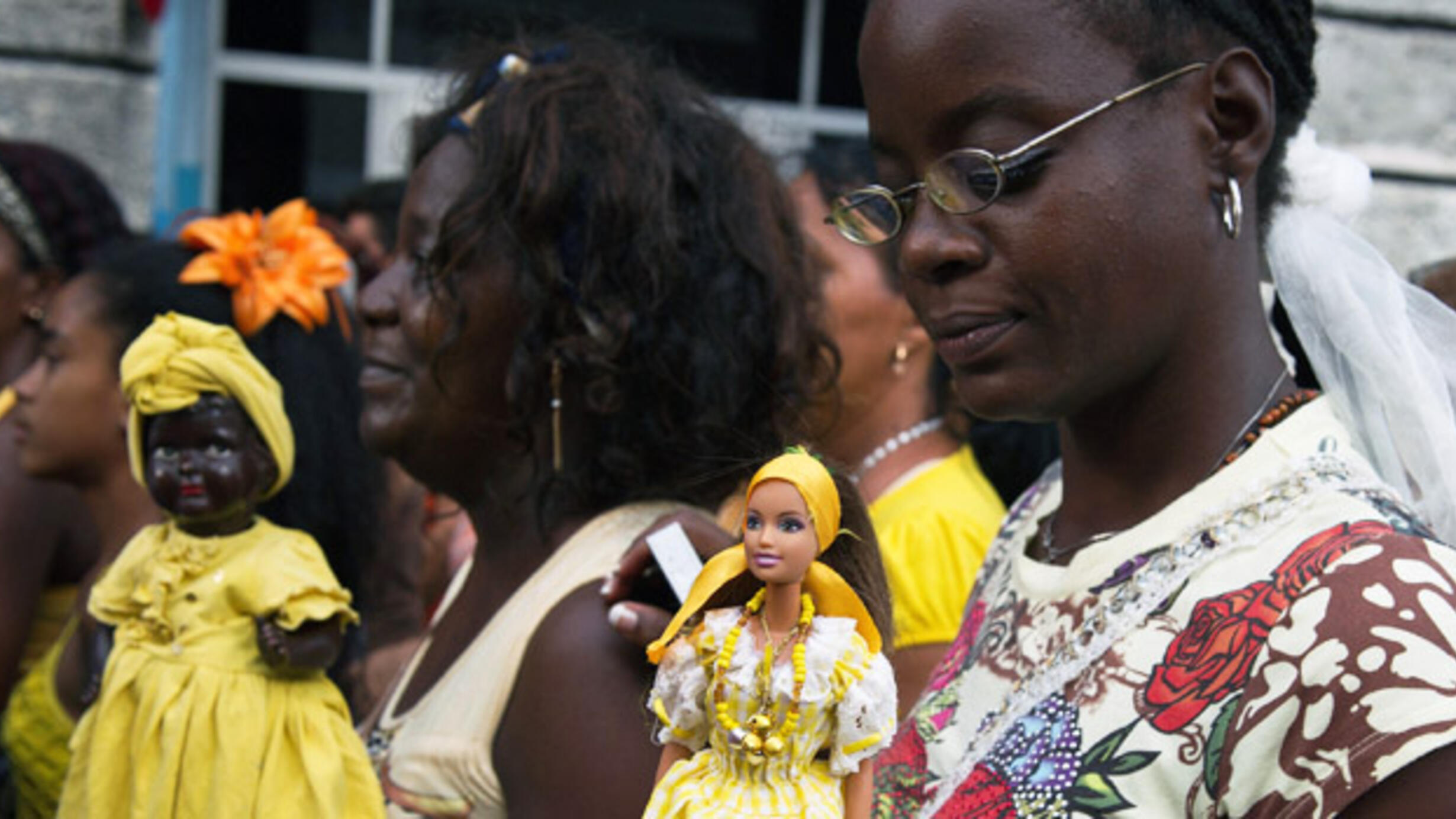Afro-Cuban Religion
Part of the ¡Cuba! exhibition.
 A group of women hold dolls representative of Oshun as they take part in a procession in her honor.
A group of women hold dolls representative of Oshun as they take part in a procession in her honor.© A. Roque/AFP/Getty Images
Religion in Cuba
A wide variety of religious traditions coexist in Cuba, and in recent decades, their role in Cuban society has grown. In the early years of the Cuban Revolution, the government declared Cuba an atheist state and suppressed organized religion. But new constitutions in 1976 and especially 1992 recognize the right to religious freedom. Today, many churches and temples in Cuba maintain strong ties with congregations in the United States and other countries.
© M. Vacca/Marka/AGE Fotostock
Afro-Cuban Religion
Cubans from many different walks of life find inspiration in orisha religion, a spiritual practice with West African roots that is sometimes called Santería. Those who follow this path seek guidance from orishas, sacred beings who reign over human endeavors and the forces of nature. Ceremonies take place inside a home, rather than a public temple or church. To honor the orishas, practitioners sometimes create elaborate altars or “thrones”—sacred spaces that present these powerful beings in regal splendor.
© S.L. Voisin/The Washington Post/Getty Images
Two Waters
On special occasions, a priest may build a richly decorated altar or “throne” to elevate deities, known as orishas, before the community of worshippers. Here, shimmering cloth fit for kings and queens forms a throne for Yemaya, deity of saltwater—the ocean, which gave birth to the world and all its creatures; and Oshun, deity of “sweet waters”—the river that gave rise to civilizations.
© AMNH/R.Mickens
Music and Dance
In orisha religion, people communicate with deities through the rhythmic language of batá drums. Facing the altar, drummers greet the orishas by playing their proper rhythms in a sequence called an oro. Then they turn toward the people and play as a praise singer chants in Lucumi, a language in the Yoruba family. Some practitioners may be moved by the spirit to dance in an orisha’s characteristic style.
© EPA European Pressphoto Agency BV/Alamy
Check out more of the exhibition—explore Tobacco in Cuba.
Top photo: © A. Roque/AFP/Getty Images